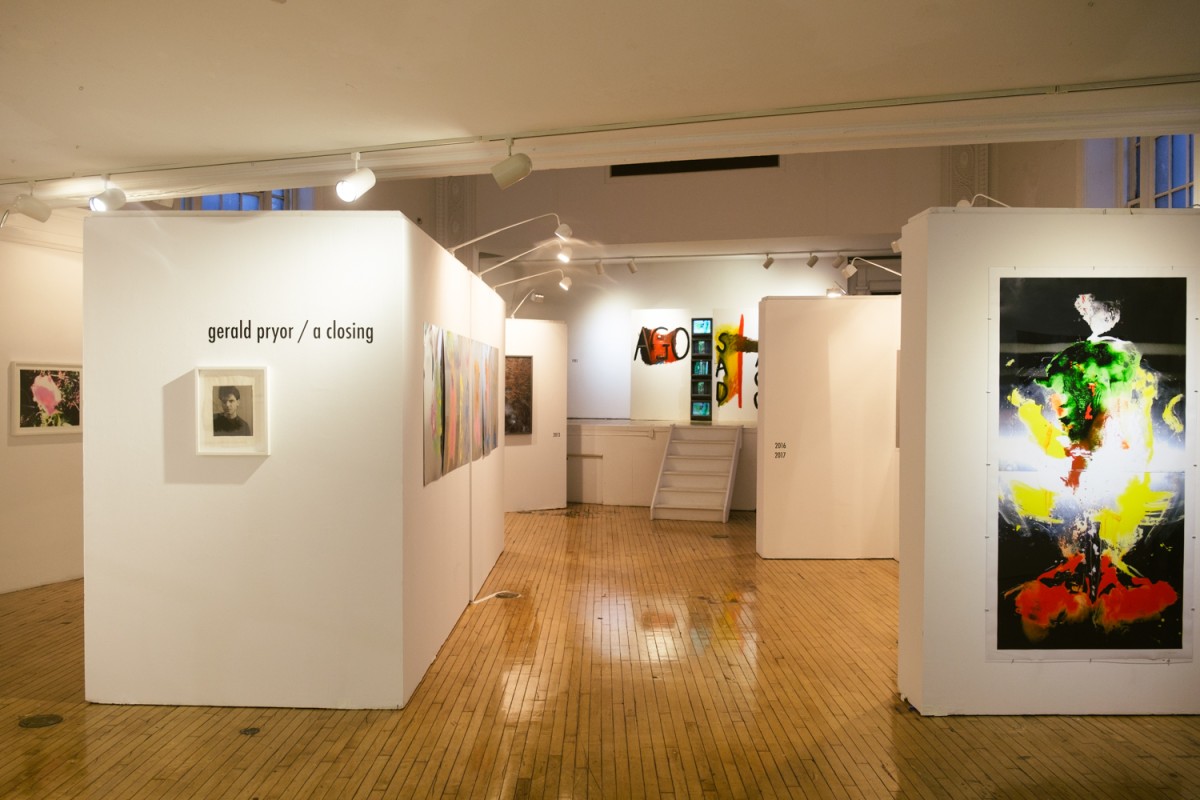Gerald Pryor’s work in the The Commons and Rosenberg Galleries on the first floor of the Barney Building guides visitors through the life of the late artist and Steinhardt professor. After a battle with cancer, Pryor passed away on Feb. 13. The exhibit celebrates his legacy as a professor of 44 years, artist-in-residence and head of photography for the Steinhardt School of Culture, Education, and Human Development’s Department of Art and Arts Professions.
Pryor is known widely for his painting, photography, video and performance works — most notably, his piece “Body Slam.” The piece was performed yearly for an entire decade in remembrance of artist Michael Richards, who died on Sept. 11.
Described as a part of “the fiber of the Downtown art scene” in a Steinhardt press release, Pryor influenced many artists, including Felix Gonzales-Torres and Michael Richards. Beyond just teaching art in New York, he also shared his skills with students in Beijing, Shanghai, Venice, and Berlin. He was the recipient of a New York Foundation for the Arts award, a Gottlieb Foundation grant and two National Endowment of the Arts awards.
In the same press release, Steinhardt also announced the eponymous Gerald Pryor Art Award, a scholarship fund for future BFA/MFA students in the Studio Art program.
Faculty members Sue de Beer and Marlene McCarty worked with Dawn Smith, Pryor’s widow, to put the show together.
“He was an artist’s artist,” McCarty wrote in the release. “He garnered attention performing his signature body slams in off-the-beaten-track venues such as in an automotive shop or at Duggal, a photo printer’s studio, on rooftops, or in the street rather than in museums and big-name galleries.”
On the north-facing wall of the gallery, abstract forms stretch across nine sheets of paper, created between 2019 and 2020. Watercolor expands into loose shapes, and this lack of structure allows viewers to form their own interpretation of the emotional meaning within the pieces. Pryor’s clean and bold lines are purposeful, though the varieties in line thickness indicate the intuitive nature behind these marks.
His work feels intimate and observant, noting an interaction between human consciousness and nature. Watercolor and graphite set a driving rhythm, projecting life from the page as soft color leaks into charcoal marks and creates subtle interactions. Within the untitled series, soft, earthy colors are interrupted by garish yellows, purples and greens. This dissonance is reminiscent of digital influence, serving as a reminder of the now ever-present digital world even in a natural setting.
His work rewards deep attention and consideration. Gestural lines in another untitled piece from 2022 suggest the human form, while more delicate graphite marks create a lyrical flow across the background of the page. His fast brushstrokes and pencil movement successfully create a dynamic motion across the wall. As time passes, landscapes begin to emerge from within the restrained art.
Pryor is careful not to overwork a page, leaving room for the viewers to place their own interpretation onto the piece. His work reflects his deep consideration for the interactions between humans and nature, and how the digital landscape alters our relationship with the natural one.
As you continue into the main gallery space, his displayed works are almost Kandinsky-esque. There is a musicality to the mark-making, exploding out of the page and slowly forming a cadence — a jolting energy balanced by the photography of the exhibit.
Pryor’s untitled photography from 2013 occupies the south side of the gallery space, disrupting three images of seemingly insignificant details of nature through a thin rectangle of distortion in the center of each print. An untitled earlier photo from 2003 of a heavily distorted pink flower echoes Pryor’s interest in exploring the disruption of nature. The images are blurred at the edges, creating a more natural visual experience as attention is pulled to focus-points through the image.
As the viewer returns back to the entrance of the exhibit, Pryor’s most recent series of untitled work from 2022 explodes with vitality. This exhibition provides a glimpse into Pryor’s own eyes and his experience of nature, creating an intimate experience for the viewer.
Loose, lyrical marks explode into structural and colorful curved forms in untitled paper works clustered on the walls of the entrance hall. His work echoes the energy he is remembered for.
“Gerald Pryor was a significant artist who kept alive the idea of what an artist could be,” McCarty concluded. “Without people like him there is no art world.”
Contact Eddi McChesney at [email protected].

























































































































































